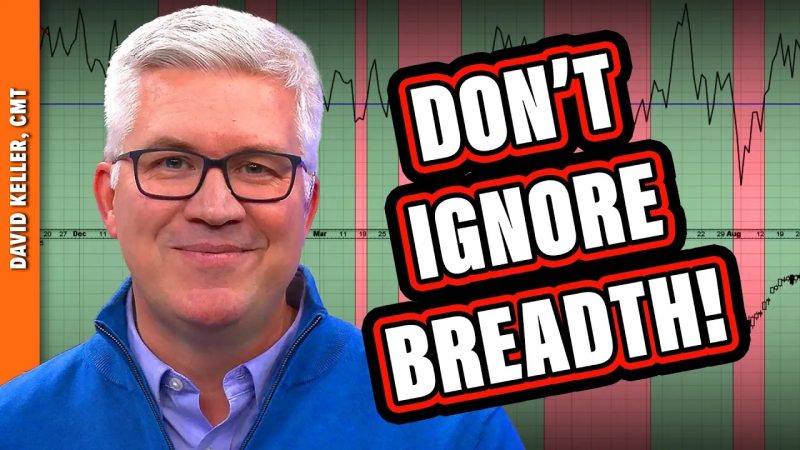Certainly! Here is a comprehensive and unique article based on the reference link provided:
### The Top 5 Breadth Indicators You Should Utilize for Successful Trading
**1. Advance-Decline Line (AD Line):**
The Advance-Decline Line (AD Line) is a breadth indicator that measures the level of participation in a market rally or decline. This indicator tracks the number of advancing stocks minus the number of declining stocks. A rising AD Line indicates that a majority of stocks are participating in the market’s upward movement, suggesting a healthy and sustainable market trend. Conversely, a declining AD Line may serve as a warning sign of a weakening market.
**2. McClellan Oscillator:**
The McClellan Oscillator is a powerful breadth indicator that helps traders identify overbought or oversold conditions in the market. This indicator calculates the difference between the 19-day EMA (Exponential Moving Average) and the 39-day EMA of advancing and declining issues. A high positive reading suggests that the market may be overbought, while a significantly negative reading indicates potential oversold conditions. By monitoring the McClellan Oscillator, traders can anticipate trend reversals and adjust their trading strategies accordingly.
**3. New Highs-Lows:**
Tracking the number of new highs and new lows in a market provides valuable insight into the strength or weakness of the current trend. When the market is rallying, an increasing number of new highs compared to new lows signifies broad market participation and bullish sentiment. Conversely, an abundance of new lows relative to new highs may signal a deteriorating market environment with weakening breadth. By observing the New Highs-Lows indicator, traders can gauge the market’s internal strength and make informed decisions about their trading positions.
**4. Arms Index (TRIN):**
The Arms Index, also known as the TRIN (short for Trading Index), is a breadth indicator that measures market sentiment and the balance between advancing and declining issues. A TRIN value above 1.0 suggests bearish sentiment, indicating that declining stocks are dominating the market. Conversely, a TRIN reading below 1.0 signals bullish sentiment, with advancing stocks leading the market higher. By incorporating the Arms Index into their analysis, traders can assess the prevailing market sentiment and adjust their trading strategies accordingly.
**5. Bullish Percent Index (BPI):**
The Bullish Percent Index (BPI) is a breadth indicator that tracks the percentage of stocks within a particular index or market that are trading with bullish technical patterns. A high BPI reading indicates that a large proportion of stocks are exhibiting positive price momentum, suggesting a robust uptrend. Conversely, a declining BPI may indicate weakening market breadth and the potential for a trend reversal. By monitoring the Bullish Percent Index, traders can gain insights into the overall health of the market and make well-informed trading decisions.
In conclusion, incorporating breadth indicators into your trading analysis is essential for understanding the underlying dynamics of the market beyond just price movements. By utilizing tools such as the Advance-Decline Line, McClellan Oscillator, New Highs-Lows, Arms Index, and Bullish Percent Index, traders can gain valuable insights into market breadth, sentiment, and internal strength. By incorporating these breadth indicators into their trading strategies, traders can enhance their decision-making process and increase their chances of trading success.
